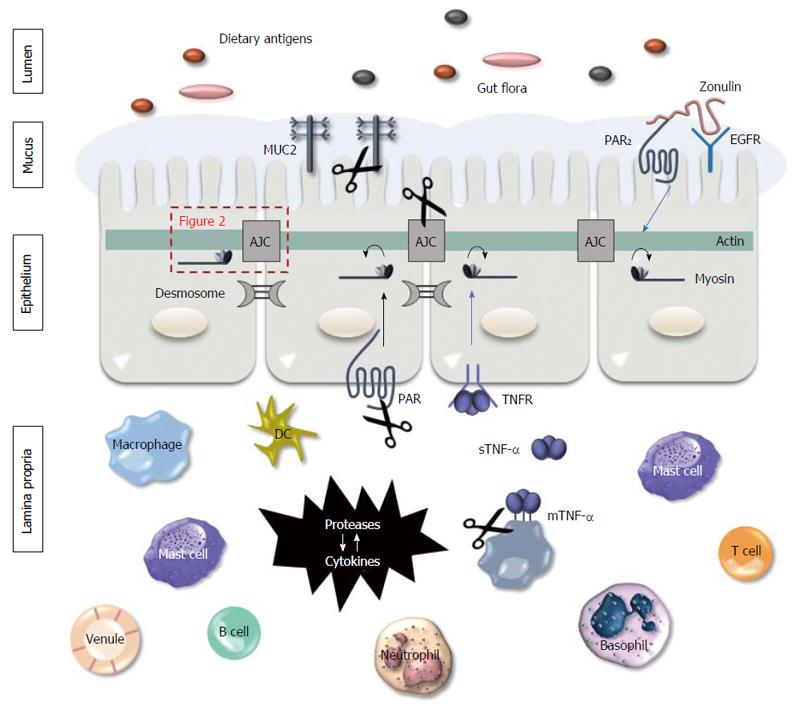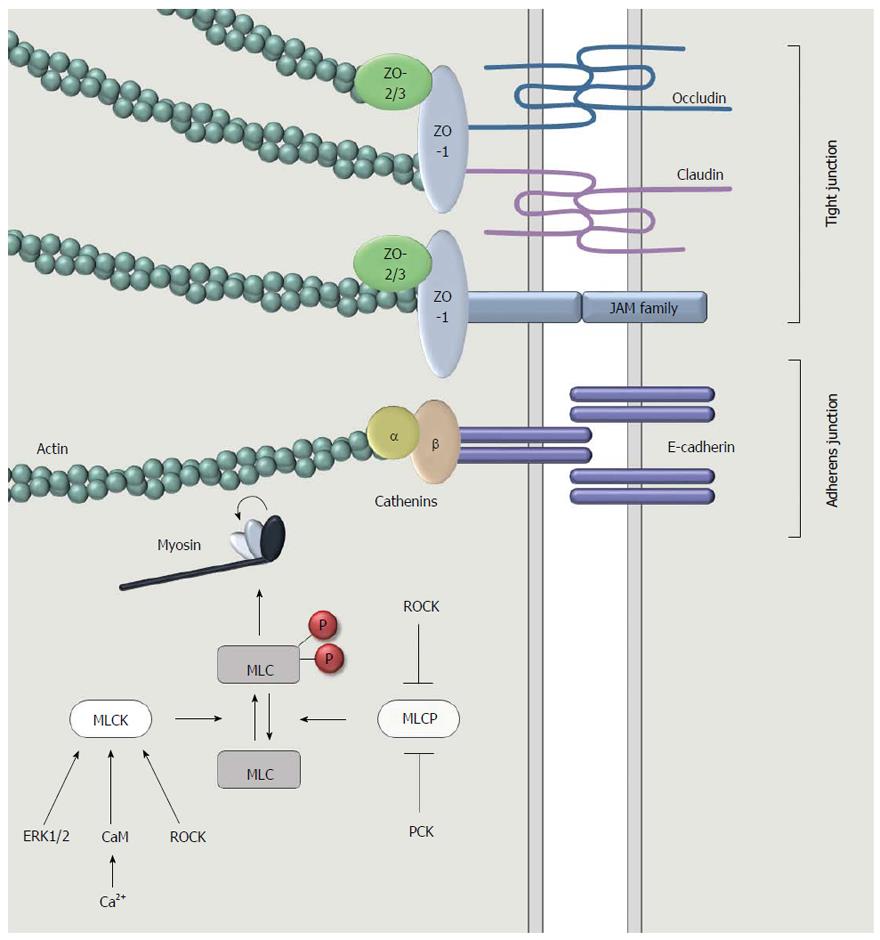Copyright
©The Author(s) 2017.
World J Gastroenterol. Mar 28, 2017; 23(12): 2106-2123
Published online Mar 28, 2017. doi: 10.3748/wjg.v23.i12.2106
Published online Mar 28, 2017. doi: 10.3748/wjg.v23.i12.2106
Figure 1 Proteases mediate gut barrier function.
Intestinal epithelial cells are constantly exposed to proteases, both on their apical and basolateral side. Luminal proteases can be endogenous (e.g., pancreatic proteases) or can originate form bacteria or food particles present in the lumen. Their proteolytic activity can cause damage to the mucus layer and the junction proteins, affecting the barrier function. In the lamina propria, proteases are produced by various inflammatory cells and by the intestinal epithelial cells. In inflammatory conditions such as inflammatory bowel disease (IBD), immune cells infiltrate in the lamina propria where they produce various cytokines and proteases, contributing to the pro-inflammatory environment. Proteases stimulate immune cells to produce cytokines and vice versa. Besides, they alter the paracellular permeability by direct proteolytic cleaving of the junction proteins and by activation of the proteinase-activated receptors (PARs) on the epithelial cell surface, that induces a contraction of the actomyosin complex and subsequent opening of the apical junction complex (AJC; more in detail in Figure 2).
Figure 2 A more detailed representation of the apical junction complex at the intercellular surface between adjacent intestinal epithelial cells.
Tight junctions are comprised of three types of transmembrane proteins: occludin, claudins and junctional adhesion molecules (JAMs). Adaptor proteins such as zonula occludens 1 (ZO-1), ZO-2 and ZO-3 connect the transmembrane proteins to filamentous actin. This cytoskeleton component interacts with myosin to induce a contraction, followed by the opening of the intercellular space. Myosin light chain (MLC) is the main regulator of this contractile machinery. Contraction occurs when MLC is phosphorylated. This is regulated through the activity of myosin light chain kinase (MLCK) and myosin light chain phosphatase (MLCP), which is on their turn regulated by intracellular signaling pathways involving for instance the extracellular signal-regulated kinases (ERK1/2), calcium, calmodulin, protein kinase C (PKC) or Rho-associated protein kinase (ROCK).
- Citation: Van Spaendonk H, Ceuleers H, Witters L, Patteet E, Joossens J, Augustyns K, Lambeir AM, De Meester I, De Man JG, De Winter BY. Regulation of intestinal permeability: The role of proteases. World J Gastroenterol 2017; 23(12): 2106-2123
- URL: https://www.wjgnet.com/1007-9327/full/v23/i12/2106.htm
- DOI: https://dx.doi.org/10.3748/wjg.v23.i12.2106










